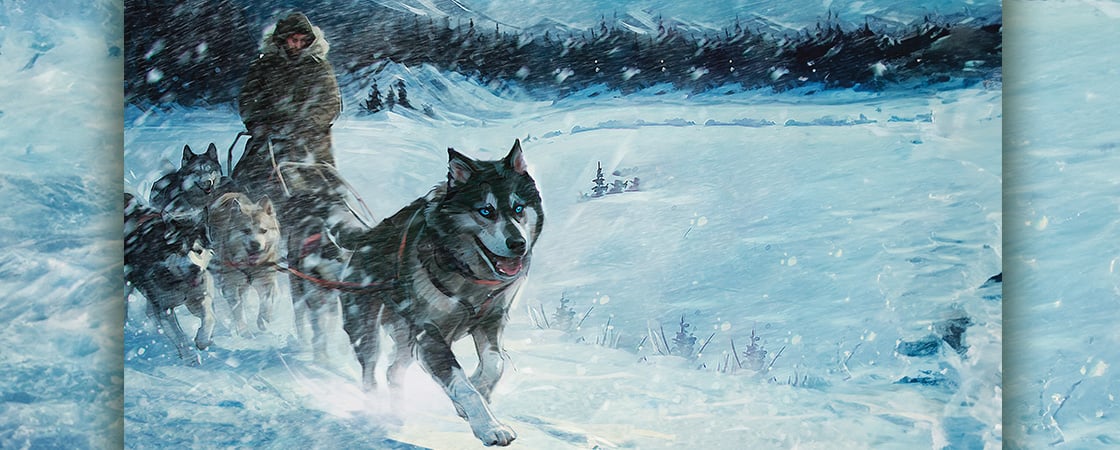SD2: Summers is outside the Seppala home with Leonhard and his wife, Constance, as dozens of huskies bark with excitement.
Leonhard Seppala: All right, dogs, settle down now.
SD3: He puts down bowls of salmon and seal blubber. The dogs happily devour the food.
Summers: Leonhard, we need you to go 300 miles east to Nulato. Another driver will be heading west with the serum to meet you. The situation is urgent.
Seppala: I understand.
Summers: It’s going to be rough terrain, but you know these trails better than anyone.
Seppala: It’s my lead dog, Togo, who really knows the trails.
SD1: Seppala ruffles the fur of a black, brown, and gray dog with intelligent eyes.
Seppala: I’d be nowhere without him.
SD2: Togo nuzzles Seppala’s leg. Constance looks at the sky.
Constance Seppala: A storm is coming.
Seppala: Storms have never stopped me before.
Summers: Don’t attempt to cross the Norton Sound. It’s not safe. Go around.
Seppala: Going across saves an entire day.
Constance: Saving a day won’t matter if the ice breaks and you plunge into freezing water.
Seppala: Togo and I will determine whether it’s stable.
Constance: I know you, Leonhard. You’re going to want to cross the Sound whether it’s stable or not.
Seppala: Togo can navigate sea ice like no other dog.
Constance: Promise me you’ll be careful.
Seppala: This entire town is counting on me. I can’t let them down.



